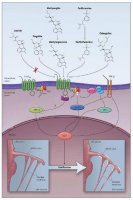Mauritio
Member
- Joined
- Feb 26, 2018
- Messages
- 5,669
Did you try to combine Diamant and Lisuride , if so what effects did you feel ?applied 1 drop on the forearm.
felt sleepy and I actually have to take a nap in 30min/body temp and apetite increased/very calm and relaxed/got constipation
exciting to see how it synergize with Diamant.


